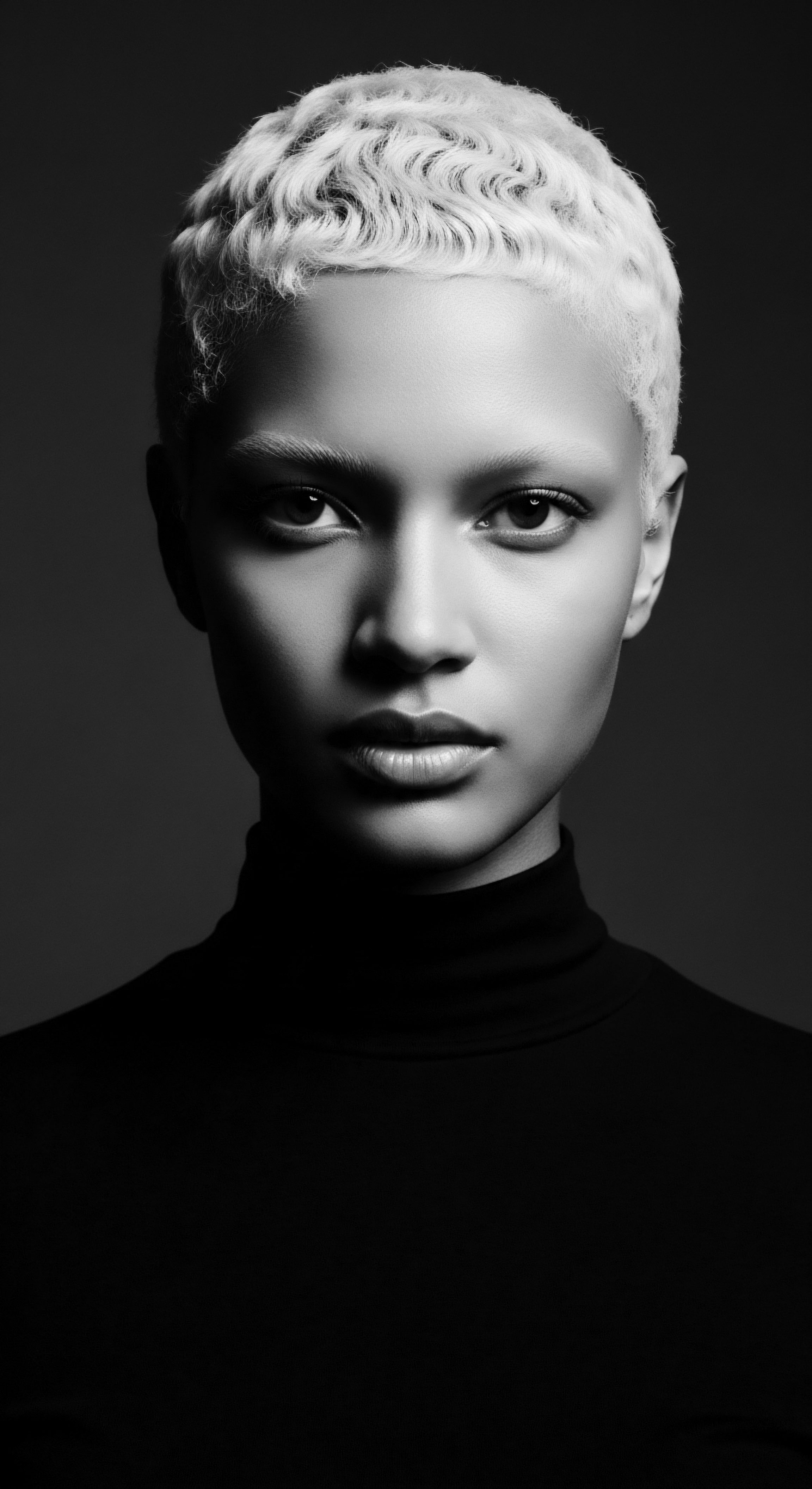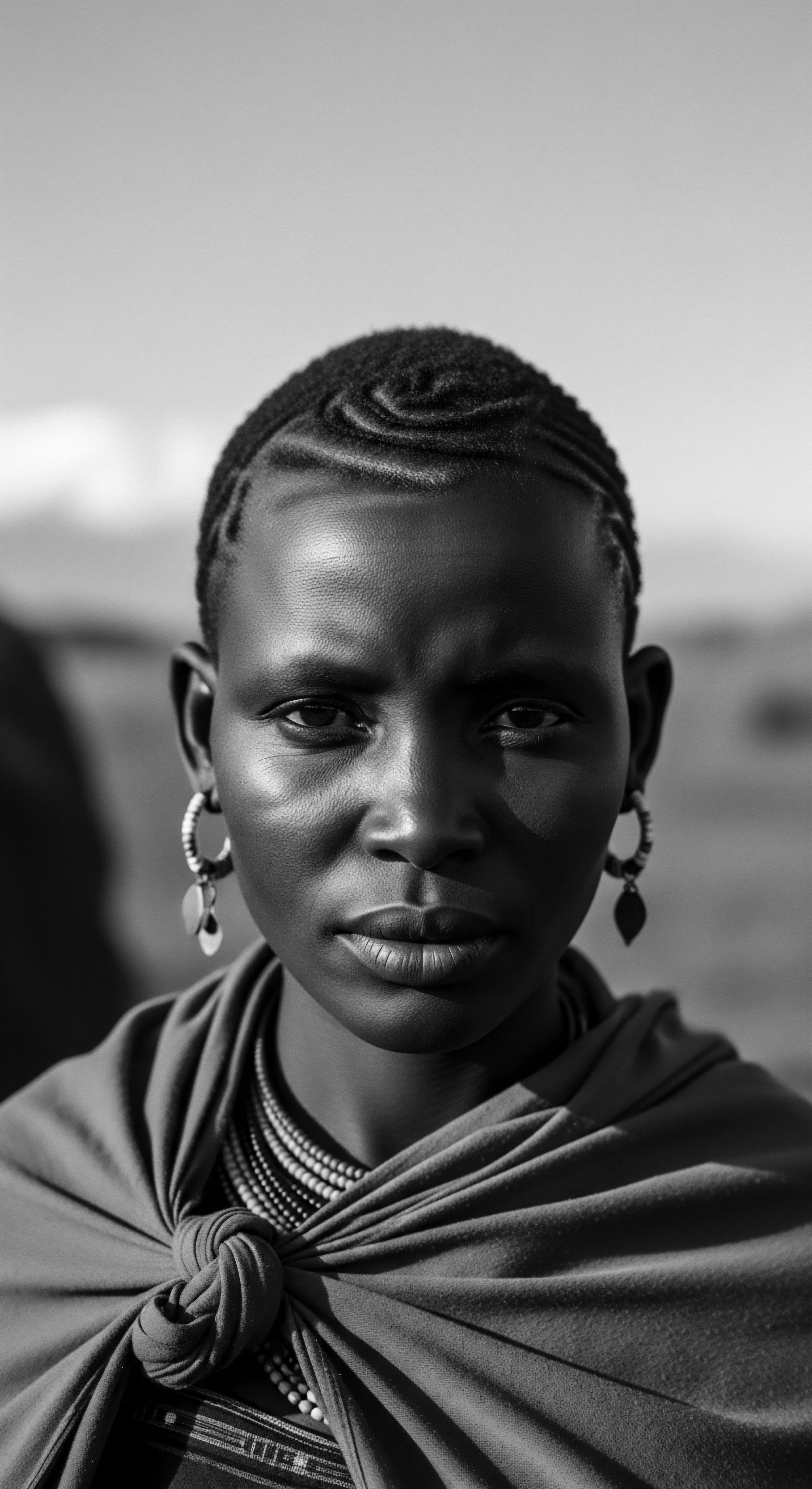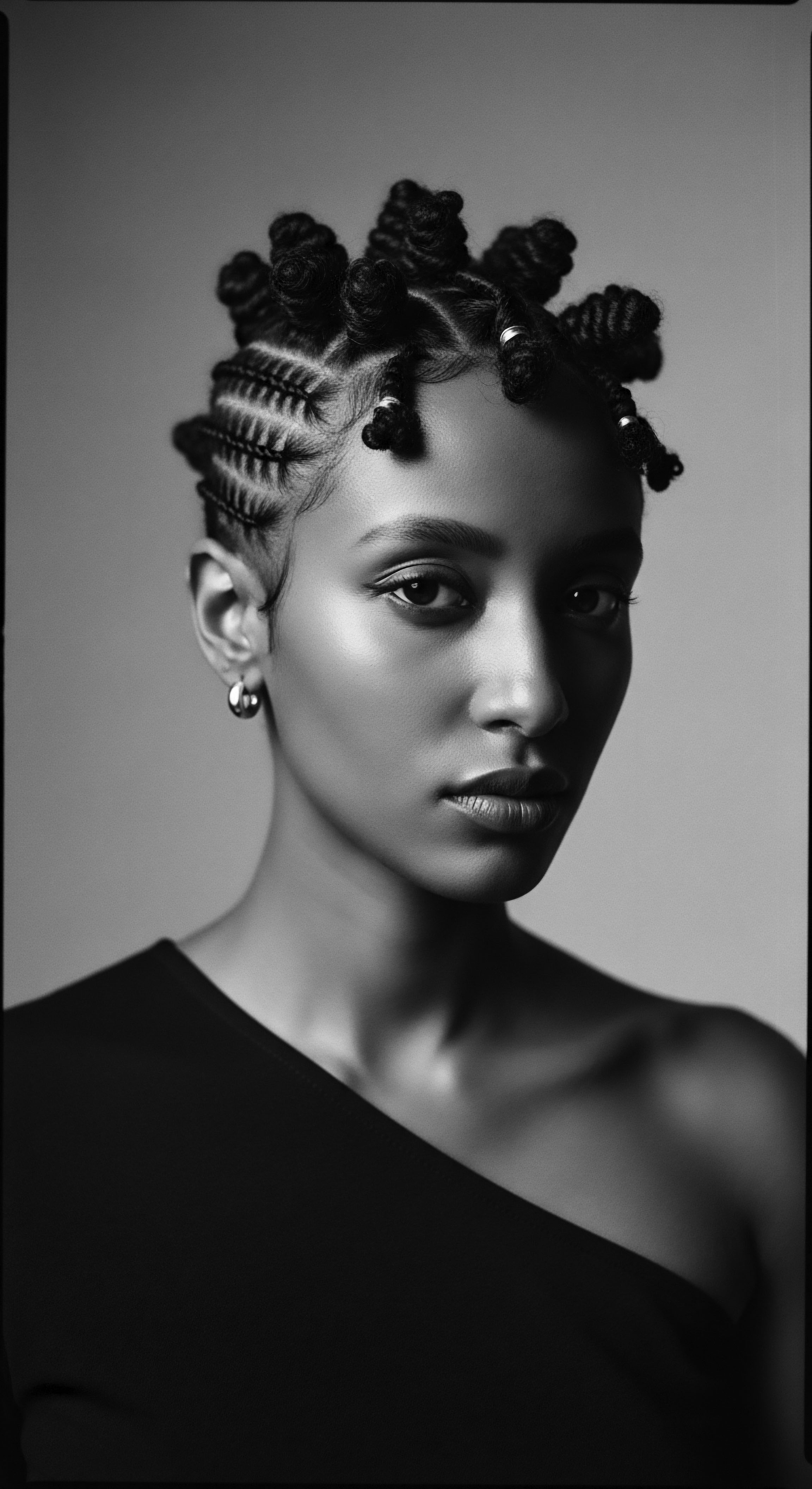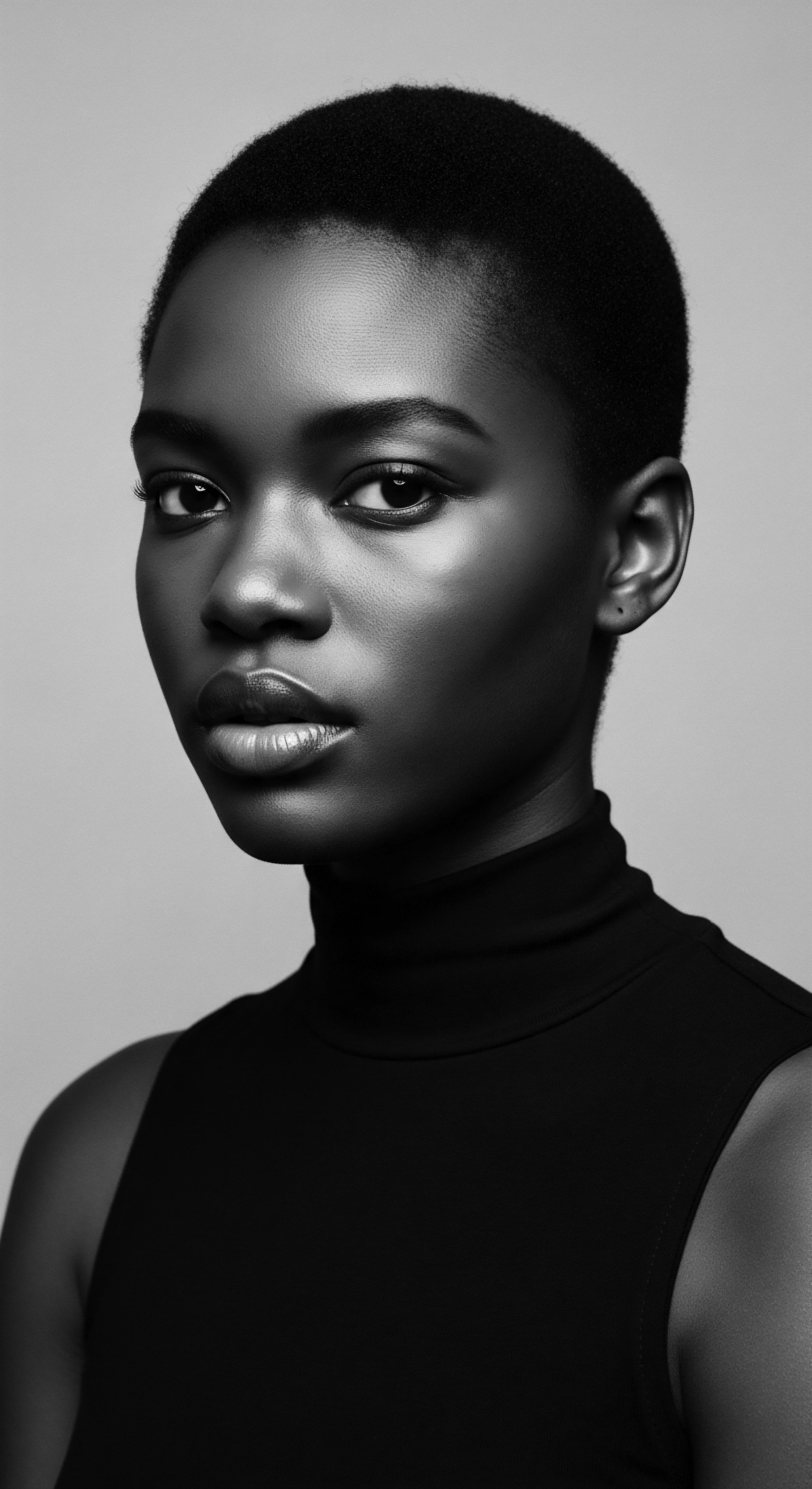
Roots
Consider the rhythm of heritage, a deep, persistent hum that resonates through generations, shaping who we are and how we care for ourselves. For individuals of Black and mixed-race ancestry, this rhythm beats with particular strength within the landscape of textured hair. It is a story not simply of strands and coils, but of profound connection to ancestral wisdom, to resilient communities, and to the earth’s own remedies.
This unfolding narrative explores how ancient plant remedies, whispered down through time, persist as living links to modern textured hair care, their power undeniable, their presence a testament to enduring cultural practices. It is a journey into the very soul of a strand , revealing layers of knowledge passed from hand to hand, from spirit to spirit.

What is the Enduring Genetic Narrative of Textured Hair?
To truly appreciate the deep heritage of textured hair care, we begin with its very foundation ❉ the hair strand itself. Hair anatomy, for textured coils and curls, presents specific characteristics. The elliptical cross-section of a textured hair strand, a marked departure from the more circular form of straighter hair, influences its unique coiling pattern. This shape, alongside an uneven distribution of keratin and a heightened number of disulphide bonds, contributes to its remarkable spring and volume.
These inherent structural qualities mean textured hair, in its natural state, tends toward dryness, as its intricate twists and turns make it more challenging for natural oils to travel from the scalp down the length of the strand. This inherent characteristic underpins centuries of care practices, focused on moisture retention and protection.
Across various ancestral lineages, diverse classifications of textured hair have existed, often tied to observational understandings of coil patterns and density. While modern systems categorize hair types with numbers and letters, older communal lexicons spoke of hair in terms of its appearance, its response to moisture, and its cultural significance. The very language used to describe textured hair today, even in its scientific application, holds echoes of these earlier, more holistic understandings.

Traditional Terms for Textured Hair Beyond Classification Systems
The vocabulary of textured hair extends beyond clinical classifications. Communities historically developed rich descriptive terms for hair, reflecting not just its texture but its symbolic weight.
- Kiko ❉ A Yoruba term, describing a form of thread-wrapping style that both protected and adorned the hair.
- Irun ❉ A general Yoruba word for hair, often combined with other terms to denote specific styles or states.
- Basara ❉ Referring to the women of Chad, whose long hair is deeply intertwined with their identity and care practices, a living testament to specific historical techniques.
These terms signify a cultural heritage where hair was, and remains, a visual language, conveying marital status, age, religion, ethnic identity, wealth, and communal rank. The very act of caring for hair was a social activity, building bonds and sharing knowledge within communities.
The intrinsic architecture of textured hair, with its distinctive elliptical shape and coiling patterns, has long shaped traditional care practices centered on profound hydration and protective shielding.

How Did Ancient Nutritional Understandings Influence Hair Health?
The cycles of hair growth – anagen, catagen, and telogen – are biological constants. However, historical environmental factors and nutritional realities profoundly influenced these cycles for ancestral communities. Access to nutrient-rich indigenous plants, often those also serving medicinal purposes, played a role in supporting hair vitality.
Ethnobotanical studies on cosmetic plants in Africa, for instance, are increasingly recognizing the topical nutritional aspects of traditional hair therapies, with some even showing potential links between plants used for hair health and systemic conditions like diabetes, hinting at a holistic understanding of wellbeing that predates modern science. Ancestral diets, rich in locally sourced flora, supplied the body with the building blocks necessary for healthy hair, making remedies from these plants a logical extension of internal wellness practices.
| Ancient Perception Hair as a symbol of strength and vitality, reflective of overall health. |
| Modern Scientific Link Hair health indicators like density and shine often correlate with nutritional status and scalp health. |
| Ancient Perception Intricate coiling patterns understood as inherent identity markers. |
| Modern Scientific Link Hair follicle shape and keratin distribution determine curl pattern. |
| Ancient Perception Hair's ability to communicate with spirits and ancestors. |
| Modern Scientific Link A spiritual and cultural understanding, distinct from physiological function, but underscoring deep reverence for hair. |
| Ancient Perception Ancient communities held a sophisticated, interconnected view of hair, blending physical characteristics with profound cultural meaning. |

Ritual
The tender thread of care, handed down through generations, stitches ancient plant remedies into the fabric of daily life. For textured hair, these practices were not merely routines; they were rituals – acts of devotion, community, and self-preservation. The application of plant-derived remedies, the careful coiling of strands, and the communal gatherings for hair dressing all speak to a deep-seated respect for hair as an extension of identity and heritage .

What Traditional Methods Protected Textured Hair from Harm?
Protective styling, a widely recognized approach in modern textured hair care, finds its roots in ancient practices designed to shield vulnerable strands from environmental stressors and minimize breakage. Our ancestors understood the delicate nature of textured hair, particularly its tendency to dry out and tangle. They devised ingenious methods to preserve length and moisture, using natural ingredients and communal effort. Think of the cornrows braided by enslaved individuals, not only as a stylistic choice but as a clandestine map to freedom, a subtle defiance against dehumanizing systems.
These styles kept hair contained, reducing exposure to harsh elements and preventing mechanical damage. Similarly, various forms of African threading , or “Irun Kiko” among the Yoruba, involved wrapping hair with natural fibers, providing both structure and protection. This method safeguarded fragile ends and promoted elongation by reducing manipulation.
These practices often involved the liberal application of plant-based salves and oils. Shea butter, extracted from the nuts of the shea tree, served as a crucial emollient across West Africa, known for its moisturizing and protective properties against harsh environmental conditions. Women historically used shea butter to protect their skin and hair from sun, wind, and dust, a practice continuing for centuries. Modern science validates this traditional wisdom, recognizing shea butter’s richness in vitamins A and E, which improve hair elasticity and offer protection.

Ancestral Protective Styling Techniques
- Braiding Patterns ❉ From intricate cornrows to robust individual braids, these styles minimized tangling and breakage, often infused with plant oils or butters for moisture.
- Thread-Wrapping ❉ Techniques like Irun Kiko, where hair is wrapped tightly with natural thread, providing structure, promoting length retention, and shielding delicate strands.
- Twisting ❉ Two-strand twists, a simple yet effective method, often used with plant-based emollients to seal in moisture and reduce daily manipulation.

How Did Ancestral Definition Techniques Shape Hair Aesthetics?
Beyond protection, ancient cultures also celebrated and defined natural curl patterns. While modern routines prioritize specific curl definitions, ancestral practices often focused on enhancing the hair’s inherent characteristics through natural emollients and careful handling. The Himba tribe in Namibia, for example, used a paste of clay and cow fat for protection and detangling, which simultaneously defined their unique hair textures. This practice speaks to a reverence for the hair’s natural form, working with it rather than against it.
The historical use of oils, such as Coconut Oil in India, and Castor Oil in ancient Egypt, primarily for moisturizing, also contributed to overall hair appearance, lending a natural luster and making hair more manageable. These applications, when combined with styling, enhanced the hair’s natural coil, allowing it to move with grace.
The complete toolkit of textured hair care, then and now, extends beyond styling. It includes instruments for detangling, sectioning, and application. While modern brushes and combs are often mass-produced, traditional tools were crafted from natural materials – wood, bone, or even specific plant fibers – designed to work harmoniously with textured hair. These tools were often passed down, embodying generational knowledge about their correct use, minimizing damage, and respecting the hair’s delicate structure.
| Traditional Tool/Method Finely toothed combs (Ancient Egypt). |
| Purpose Distribute oils, remove impurities. |
| Modern Parallel/Insight Wide-tooth combs, detangling brushes for gentle product distribution and knot removal. |
| Traditional Tool/Method Hand-crafted wooden picks/combs. |
| Purpose Lift roots, detangle large sections with minimal tension. |
| Modern Parallel/Insight Afro picks, specialized detangling brushes with flexible bristles. |
| Traditional Tool/Method Natural fibers for threading (Yoruba). |
| Purpose Elongate hair, protect ends, create specific styles. |
| Modern Parallel/Insight Hair wrapping techniques, tension methods for stretching hair without heat. |
| Traditional Tool/Method The ingenuity of ancestral tools directly informs the principles of gentle, effective care for textured hair today. |
Traditional hair care, far from being mere vanity, was an expression of cultural identity, community bonding, and ingenious hair preservation, deeply rooted in the earth’s offerings.

Relay
The relay of wisdom across continents and centuries speaks volumes, an unbroken chain connecting the quiet strength of ancient plant remedies to the vibrant, dynamic world of modern textured hair care. This is where elemental biology meets living tradition, where the whispers of ancestors find voice in the practices of today, offering a profound understanding of heritage as a guiding force.

How does Cultural Continuity Shape Hair Care Regimens?
The concept of building a personalized hair regimen, so prevalent in today’s beauty discourse, has deep ancestral echoes. Historically, the optimal care for textured hair was not a universal prescription but a tailored approach, informed by local flora, climate, and inherited wisdom. This adaptability allowed communities to create regimens uniquely suited to their environment and the specific needs of their hair. The persistent practice of oiling, for instance, a cornerstone of many ancient hair rituals, speaks to this.
From Ayurvedic traditions in India, where sesame, coconut, and castor oils were used to nourish and strengthen hair, to Egyptian practices utilizing castor and almond oils, the understanding of plant oils as hair fortifiers and moisturizers was widespread. Modern science now validates these historical practices, demonstrating how oils like coconut oil penetrate the hair shaft to reduce protein loss, or how castor oil’s ricinoleic acid supports a healthy scalp. This continuity is a powerful testament to the efficacy of traditional knowledge.

Ethnobotanical Insights into Ancient Remedies for Hair Health
Recent ethnobotanical studies highlight the wealth of plants traditionally used for hair care across Africa. One such study identified 68 plant species used for various hair and scalp conditions like alopecia, dandruff, and lice. Significantly, 58 of these species also show potential as antidiabetic treatments when taken orally, suggesting a profound, interconnected understanding of health and topical nutrition in ancestral practices. This reveals a level of sophisticated observation about plant properties that far predates modern laboratory analysis.

What Makes Chebe Powder a Powerful Historical Example of Length Retention?
A powerful specific historical example that illuminates the connection between ancient plant remedies and modern textured hair care, deeply infused with Black heritage, is the tradition of Chebe powder among the Basara women of Chad. This particular practice, a cornerstone of their hair care for centuries, showcases an unparalleled dedication to length retention, contributing to their famously long, strong hair, often reaching past their waist.
The women of Chad have, for generations, created a paste from Chebe powder , mixing it with oils and butters, which they apply to the length of their damp hair. They meticulously coat each strand, avoiding the scalp, and then braid their hair into protective styles. This regimen is repeated every few days, without washing the hair in between applications, allowing the mixture to continuously lubricate and protect the hair shaft. This consistent coating reduces breakage, a common challenge for textured hair, thereby promoting length retention.
The ingredients of Chebe powder typically include Croton zambesicus (Lavender Croton), Mahllaba Soubiane (cherry kernels), cloves, resin, and stone scent. These components work in synergy. For example, the natural fats and minerals present are recognized for their role in hair strength and length preservation. While anecdotal evidence long supported its efficacy, modern scientific understanding is beginning to unpack the mechanisms.
The lubricating effect of the mixture minimizes friction between hair strands, which is a significant factor in breakage for coiled hair. The consistent moisture delivery from the oils and butters, sealed in by the powder, maintains elasticity and pliability, preventing the hair from becoming dry and brittle.
The tradition of Chebe powder is more than a hair care method; it is a cultural pillar . It represents a profound indigenous knowledge system, passed down from mother to daughter, fostering community bonding and serving as a symbol of identity and pride within Chadian culture. This ritual, deeply embedded in the lives of Basara women, stands as a testament to their ancestral wisdom and resilience in maintaining healthy, long textured hair despite harsh environmental conditions. The global recognition and adoption of Chebe powder in contemporary textured hair care markets highlight how ancient practices continue to shape and validate modern approaches, preserving a living heritage of beauty and wellness.

How are Ancient Wellness Philosophies Mirrored in Modern Care?
The night, a time for rest and renewal, has long been recognized as a period for profound hair care. The concept of a “nighttime sanctuary” for textured hair, often involving bonnets or other head coverings, has deep historical roots. These coverings were not solely for protection; they often held cultural or spiritual significance, maintaining styles and preparing hair for the day ahead.
Bonnets, wraps, and similar headwear shielded hair from friction against bedding, preserved moisture, and kept intricate styles intact, a practice vital for maintaining hair health over extended periods. This protective measure, still widely used today, directly reflects an ancestral understanding of preservation.
The holistic influences on hair health, deeply embedded in ancestral wellness philosophies, also continue to shape modern understanding. The idea that hair health is inseparable from overall well-being is not a new concept; it is a wisdom passed down through generations. Ancient Indian Ayurveda, for instance, links healthy hair directly to good nourishment and overall health, advocating for a balanced approach to life that integrates diet, lifestyle, and natural remedies.
Similarly, in various African traditions, the use of plants for hair often overlapped with their medicinal uses, signifying a comprehensive view of the body’s systems. This ancestral philosophy recognized the interplay of internal and external factors, moving beyond surface-level aesthetics to address deeper physiological needs.
The transfer of ancient plant knowledge, particularly through practices like the Chebe ritual of Chad, profoundly guides modern textured hair care, underscoring enduring ancestral wisdom in promoting strand strength and length.

Reflection
To journey through the heritage of textured hair care is to walk a path illuminated by ancestral hands, a path that weaves from the earth’s raw offerings to the sophisticated formulations of today. This exploration of ancient plant remedies and their enduring links to modern textured hair care reveals a story far richer than mere trends or scientific discovery. It speaks to a profound respect for the wisdom passed down, a recognition of ingenuity born of necessity and deep environmental connection. Every protective style, every application of a plant-derived butter, every gentle detangling stroke carries an echo of communal care, of identity asserted, and of an unbreakable spirit.
Our hair, particularly textured hair, carries within its very coils the living memory of those who came before us. It is a testament to their resilience, their adaptability, and their deep understanding of the natural world. The continued relevance of remedies like Chebe powder, shea butter, and various herbal infusions is not coincidental; it is proof of their inherent effectiveness, validated over millennia.
We see this wisdom re-emerging, not as a nostalgic retreat, but as a conscious return to practices that truly nourish, protect, and honor our unique hair. This living archive, the “Soul of a Strand,” is not static; it grows, breathes, and evolves, carrying forward the legacy of our ancestors into a vibrant future, inviting each of us to connect with this enduring heritage and find power in its embrace.

References
- Cosmetopoeia of African Plants in Hair Treatment and Care ❉ Topical Nutrition and the Antidiabetic Connection?. MDPI, 2024.
- The Ancient Natural Ways of Hair Care Across Continents. 22 Ayur, 2024.
- Reviving Ancient Hair Rituals ❉ Exploring the Therapeutic Art of Hair-Oiling. Clinikally, 2024.
- Ancient African Hair Growth Secrets For Healthy Hair. Sellox Blog, 2021.
- Chebe Powder. Chebeauty.
- Powerful African and Asian Herbs for Hair Growth ❉ Nature’s Remedies fo. AYANAE, 2024.
- Discovering the Origins of Shea Butter – A Journey to the Heart of Africa. 2024.
- History of Hair. African American Museum of Iowa.
- Roselle Naturals Chebe Powder Imported from Chad, Africa 20g – African Chebe Powder for Hair Growth, Deep Moisturizing Hair Growth, Chebe Hair Mask. Amazon.com.
- The Cultural Background and History of Chebe Powder. SEVICH.
- Hair Care through the ages ❉ Inspired by the past, Designed for the future. Safic-Alcan.
- The Legacy of Lathers ❉ Tracing the Historical Use of Natural Ingredien. 2023.
- Chebe Powder the Traditional Way | How to Mix & Apply for Length Retention. YouTube, 2019.
- African Hairstyles ❉ Cultural Significance and Legacy. Afriklens, 2024.
- ANCIENT HAIR RITUALS FOR THE MODERN WOMAN. emma plus three, 2023.
- The History of Chebe Powder ❉ An Ancient African Hair Secret for Hair Growth. 2025.
- The Cultural Significance and Representation of Afro-Textured Hair. Umthi, 2023.
- Chad Chebe Powder 100g – Natural African Hair Growth Treatment for Women – Pure Traditional Chadian Recipe for Long Thick Hair – Ancient Beauty Secret from Chad – Hair Care Supplement.
- The ancient haircare secret that’s backed by modern science. Rolling Out, 2025.
- End Hair Discrimination. Halo Collective.
- The Benefits of African Shea Butter in Skin Care and Hair care Products. 2024.
- Traditional African Secrets For Long And Healthy Hair. Africa Imports.
- Indian Beginnings of the Shampoo. ScienceIndiamag, 2025.
- The Bonding Ritual of Hair Oiling. Brown History, 2023.
- Rediscovering Historical Hair Care Practices. Fabulive.
- mother nature’s conditioner ❉ shea butter. 2017.
- African-American hair. Wikipedia.
- Ethnobotanical study of plants used for medicinal, cosmetic, and food purposes in the region of Moulay Yacoub. JPPRes, 2021.
- Ethnobotanical Survey of Medicinal Plants used in the Treatment and Care of Hair in Karia ba Mohamed (Northern. 2020.
- Ancient Gems ❉ A Historical Survey of African Beauty Techniques. Obscure Histories, 2024.
- African Beauty and Skincare ❉ A Deep Dive into History, Traditions, and Natural Ingredients. 2025.
- What Is Shea Butter?. متجر زبدة الشيا, 2024.
- Plants used for hair and skin health care by local communities of Afar, Northeastern Ethiopia. Ethnobotany Research and Applications, 2025.
- Real traditional shea butter. Karethic, 2016.
- Unlocking Ancient African Beauty Traditions ❉ A Tribute to Black History Month with Timeless Indigenous Ingredients for Radiant Skin and Hair. 2024.
- Hair Care Rituals from Around the World. Bellevida Beauty, 2023.
- Unlock Ancient Hair Care Secrets ❉ Discover Global Rituals for Lustrous Locks. Joanna Colomas, 2023.
- Cosmetopoeia of African Plants in Hair Treatment and Care ❉ Topical Nutrition and the Antidiabetic Connection?. ResearchGate, 2024.
- folk herbal hair rinse. Dr. Brittany Wolfe, Naturopathic Doctor, 2024.
- Unknown Title. Tropical Journal of Natural Product Research.
- CHECK OUT THESE TRADITIONAL HAIRCARE TREATMENTS. the afro curly hair coach, 2023.
- Herbs For Hair Care. Chagrin Valley Soap & Salve, 2016.
- Your guide to using plants for healthy hair Growth. Dutch Health Store, 2024.
- Indian Home Remedies for Hair Growth ❉ 8 Ayurvedic Tips for Lustrous, Healthy Locks. 2021.
